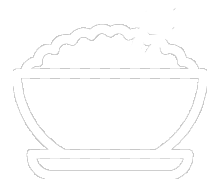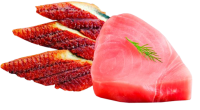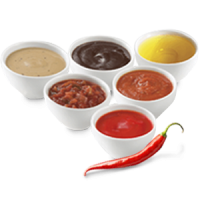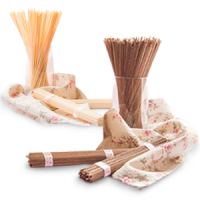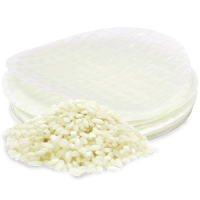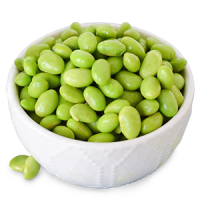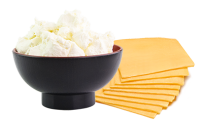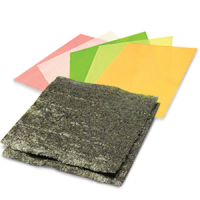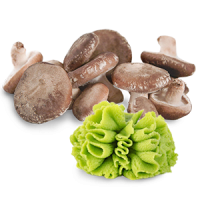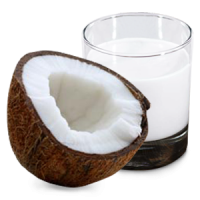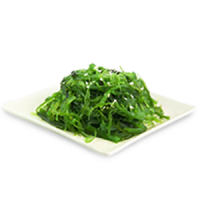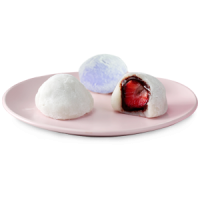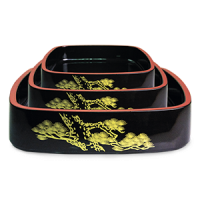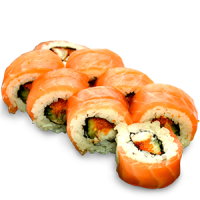Nori seaweed or nori sheets
 Nori seaweed (nori sheets) — it's not just an ingredient for sushi. It is a valuable, important product, especially in oriental cuisine, with a long production chain. Growing nori is a complex and high-tech process, and it began in Japan several centuries ago. Today, most nori is grown on special marine plantations, mainly in Japan, Korea and China. And the process looks like this.
Nori seaweed (nori sheets) — it's not just an ingredient for sushi. It is a valuable, important product, especially in oriental cuisine, with a long production chain. Growing nori is a complex and high-tech process, and it began in Japan several centuries ago. Today, most nori is grown on special marine plantations, mainly in Japan, Korea and China. And the process looks like this.
How is nori made?
 First, algae spores are collected from wild plants and placed on nets or ropes in special water tanks. That's where they germinate.
First, algae spores are collected from wild plants and placed on nets or ropes in special water tanks. That's where they germinate.
As soon as the algae grow to a certain size, they are transferred to seawater. Special underwater farms located along the coast create ideal conditions for their growth. Many factors are important: temperature regime, lighting and water inflows, because algae need both the sun and a special water environment for photosynthesis. Algae grow on nets submerged in water to a certain depth to provide access to sunlight and nutrients.
Nori are harvested several times a year, usually during the winter months when conditions are best for their growth. After the algae are collected, they are washed, crushed and pressed into thin sheets that are dried in the sun or in special dryers.
When such complex growing processes, largely dependent on natural conditions, are finished, nori are packaged and prepared for sale.
How to choose high-quality nori?
 Quality holes are always solid and without holes in the sheet . If the algae grew in conditions where there were strong currents or waves, the leaves may be damaged and have small holes in the leaves. Also, holes may appear during processing or drying, especially if the leaves dry unevenly or some parts of the leaves were thinner. Such nori are not considered high-quality and have a lower demand.
Quality holes are always solid and without holes in the sheet . If the algae grew in conditions where there were strong currents or waves, the leaves may be damaged and have small holes in the leaves. Also, holes may appear during processing or drying, especially if the leaves dry unevenly or some parts of the leaves were thinner. Such nori are not considered high-quality and have a lower demand.
Solid, undamaged burrows are of higher quality because they have a solid, even appearance and smooth texture, with no visible damage. This means that the leaves were grown in controlled conditions where waves and sea conditions did not affect the integrity of the algae. And also, in the future, they were processed at the corresponding modern production facilities.
Working with the best producers in this field, Morskyi Dim provides HoReCa establishments of Ukraine only high-quality nori .
By the way, nori can be used not only for sushi.
What can you cook with nori besides sushi?
This is a fairly universal ingredient that is used for the following dishes:
- Onigiri - Japanese rice balls wrapped in nori sheets. The filling can be different: fish, vegetables, meat or even salty plum pate (umeboshi). Temaki is a type of sushi in the form of a nori cone, in which rice and ingredients (fish, vegetables, seafood) are placed.
- Nori salads –chopped nori leaves can be added to salads as an aromatic garnish or ingredient. They are used to add texture and a light sea flavor.
- Nori soups - nori sheets are added to various soups, including miso soup and ramen. They get wet quickly and add an interesting taste to the dish.
- Sandwiches and rolls - sheets of nori can be used as a tasty shell for different options of snacks. You can wrap rice, vegetables or even sausages in the hole and serve it as an alternative to classic sandwiches.
- Nori chips - nori sheets are cut into strips, lightly greased with oil and baked in the oven until crispy. They can be seasoned with salt, sesame or other spices for a richer taste.


Choose the best nori for your meals at the "Morskyi Dim".
Our assortment is represented by the trademarks JS, Kimnori (Korea), Takaokaya (Japan) – well-known trademarks recognized throughout the world. These are ideal products for professional use. And if you need help or advice on other Asian products – write or call today.
“Morskyi Dim” always open to cooperation and partnership for our joint success!

